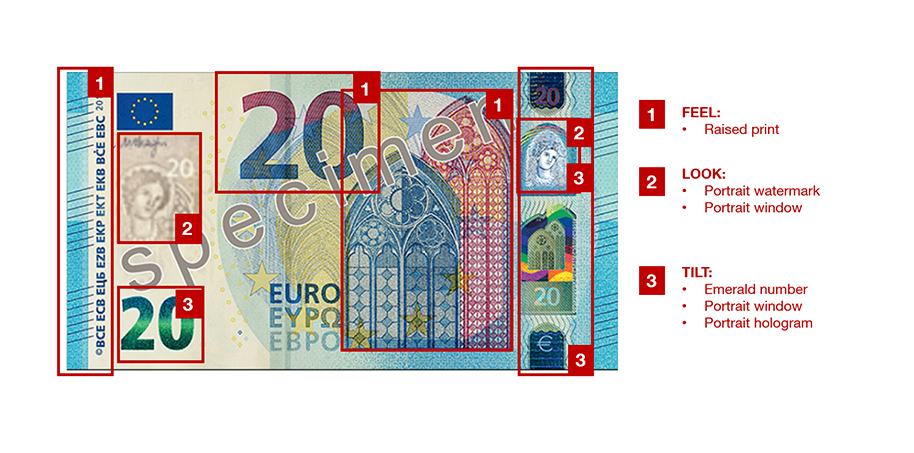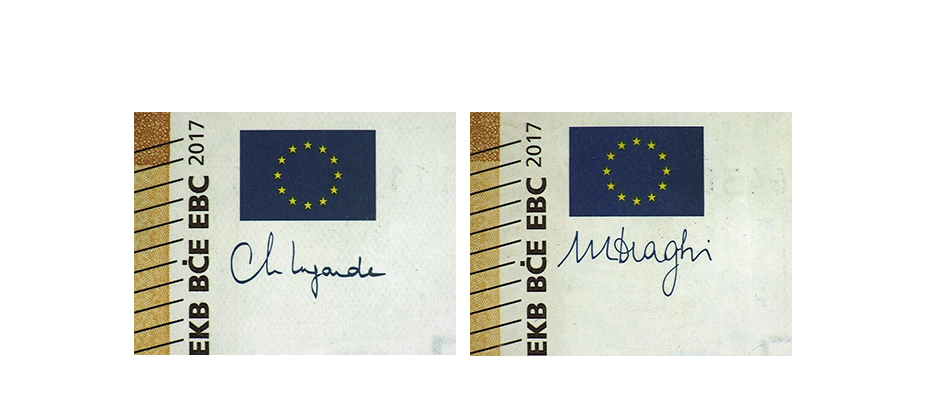The Europa series banknotes have been gradually introduced over several years. The €5, €10, €20 and €50 banknotes were issued in 2013, 2014, 2015 and 2017, respectively. The €100 and €200 banknotes began to circulate in 2019, completing the issuance of the Europa series.
The design of the Europa series was entrusted to Reinhold Gerstetter, a German banknote designer and is very similar to the design of the first series of banknotes.
The Europa series banknotes have the same dominant colours and include new security features to prevent counterfeiting and help citizens check their authenticity.
The second series is called the Europa series because a portrait of Europa appears among its security elements. This character from Greek mythology was chosen for its clear association with the European continent and because she adds a human touch to euro banknotes. The image has been taken from a vase from ancient Greece preserved in the Louvre Museum in Paris.
Like the first series, the Europa series banknotes show architectural styles from different periods in European history, but their design has been slightly modified. These are the main changes:

- a portrait of the mythological princess Europa appears in the watermark and in the hologram.
- the name of the currency, "euro", also appears in the Cyrillic alphabet (EBPO), as a result of Bulgaria joining the EU in 2007.
- a revised map of Europe, including Malta and Cyprus is shown, and
- the initials of the European Central Bank are included in nine linguistic variants on the new €5, €10 and €20 banknotes and in ten linguistic variants on the new €50, €100 and €200 banknotes, taking into account Croatia’s accession to the EU in 2013.

Likewise, the Europa series banknotes incorporate the signature of the previous president, Mario Draghi, or the current president, Christine Lagarde. Banknotes with any of these signatures are equally valid.

As with the first series of euro banknotes, visually impaired users were consulted during the design phase, which led to the inclusion of their requirements in the final designs.
